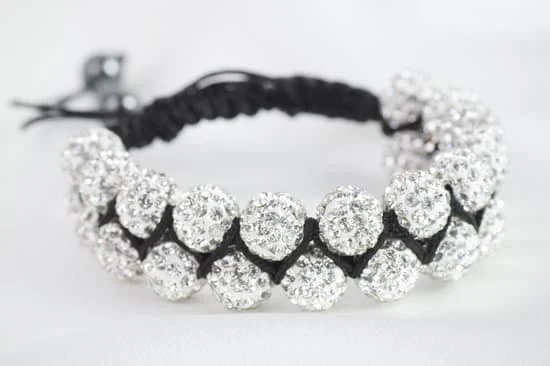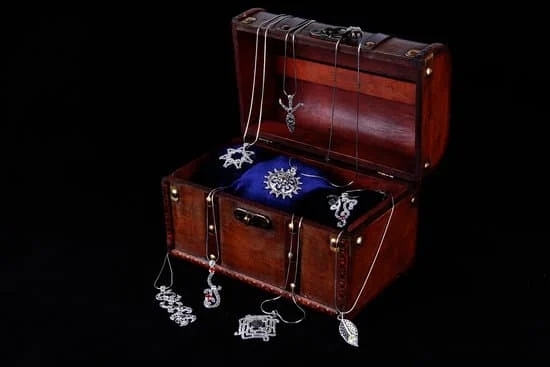What is handmade jewelry? Handmade jewelry refers to accessories that are crafted by hand, using traditional methods and tools, rather than mass-produced by machines. In this article, we will explore the history, significance, creation process, materials used, benefits of wearing, unique designs and styles, support for local artisans and small businesses, as well as tips for purchasing and caring for handmade jewelry.
Handmade jewelry has been cherished throughout history for its uniqueness and personal touch. The art of crafting jewelry by hand dates back centuries and holds cultural significance in many societies. From ancient civilizations to modern times, handmade jewelry has been a symbol of craftsmanship and creativity.
The process of creating handmade jewelry involves intricate techniques such as wire-wrapping, metal smithing, beadwork, and more. Artisans pour their time and dedication into each piece they create, resulting in one-of-a-kind items that cannot be replicated by machines. This attention to detail adds to the allure of handmade jewelry and sets it apart from mass-produced counterparts.
The History and Significance of Handmade Jewelry
Handmade jewelry has been a part of human culture for thousands of years, dating back to ancient civilizations. From the ancient Egyptians to the Greeks and Romans, handmade jewelry has always been an important form of self-expression, status symbol, and even a religious or spiritual significance. Throughout history, different cultures have used handmade jewelry as a way to honor their traditions and beliefs.
One significant aspect of handmade jewelry is the craftsmanship and artistry involved in creating each piece. Unlike mass-produced jewelry, handmade pieces require skill, creativity, and dedication from the artisan. This personal touch adds emotional value to each piece, making it more than just an accessory but a work of art with a story behind it.
Another key aspect of the significance of handmade jewelry is its connection to sustainability and ethical practices. Many artisans who create handmade jewelry use eco-friendly materials and methods, ensuring that their craft has minimal impact on the environment. Additionally, supporting local artisans by purchasing their handmade jewelry helps sustain traditional crafts and small businesses within communities.
In today’s fast-paced world dominated by mass production, understanding the history and significance of handmade jewelry serves as a reminder of the value of preserving traditional craftsmanship and supporting artisans who continue to keep these age-old techniques alive.
| Significance | Handmade Jewelry |
|---|---|
| Craftsmanship | Emotional value |
| Sustainability | Ethical Practices |
The Process of Creating Handmade Jewelry
Handmade jewelry is a beautiful and unique form of adornment that is created with care and skill by artisans. The process of creating handmade jewelry involves several intricate steps that result in a stunning piece of wearable art. Below are the key steps involved in the creation of handmade jewelry:
- Designing: The first step in creating handmade jewelry involves designing the piece. This can be done through sketching, using computer-aided design (CAD) software, or simply visualizing the design in the artisan’s mind.
- Material selection: Once the design is finalized, the artisan must carefully select the materials to be used. These materials can range from precious metals such as gold and silver to gemstones, beads, and other embellishments.
- Assembly: Using a variety of tools and techniques such as soldering, wire wrapping, and beadwork, the artisan assembles the components of the jewelry piece with precision and attention to detail.
- Finishing touches: After assembly, the jewelry piece may undergo additional processes such as polishing, oxidizing, or texturing to achieve its final look. This adds depth and character to the finished piece.
The process of creating handmade jewelry is a labor of love that requires skill, creativity, and patience. Each step is carefully executed to ensure that the final piece reflects the artisan’s vision and craftsmanship.
What sets handmade jewelry apart from mass-produced pieces is the level of attention and care put into each creation. Artisans take pride in their work and pour their passion into every handmade jewelry piece they create. As a result, each item becomes a unique expression of artistry and individuality.
Different Materials Used in Handmade Jewelry
When it comes to creating handmade jewelry, artisans have the freedom to explore and experiment with a wide range of materials. This allows for an endless array of unique and stunning designs that can’t be found in mass-produced pieces. Here are some of the most common materials used in handmade jewelry:
- Precious Metals: Gold, silver, and platinum are often used in handmade jewelry for their durability and timeless appeal.
- Gemstones: From classic diamonds and rubies to more exotic choices like opals and turquoise, gemstones add color, sparkle, and personality to handmade pieces.
- Wire: Artisans often use wire wrapping techniques to create intricate designs using copper, sterling silver, or gold-filled wire.
- Organic Materials: Wood, bone, shell, and even seeds can be incorporated into handmade jewelry for a natural and earthy aesthetic.
- Recycled Materials: Many artisans are environmentally conscious and repurpose materials such as glass, fabric scraps, or even old hardware into one-of-a-kind jewelry pieces.
The use of these diverse materials not only adds visual interest to the jewelry but also allows customers to find pieces that align with their personal style and values. Whether it’s a bold statement necklace made from recycled glass beads or delicate earrings featuring ethically sourced gemstones, handmade jewelry offers something for everyone.
In addition to the creative possibilities offered by these materials, their inclusion in handmade jewelry also supports sustainable practices. By choosing eco-friendly materials or sourcing gemstones from ethical suppliers, artisans can minimize their environmental impact while creating beautiful adornments for their customers. Overall, the use of different materials in handmade jewelry adds depth and meaning to each piece while appealing to a broad range of tastes and preferences.
The Benefits of Wearing Handmade Jewelry
When it comes to accessorizing, handmade jewelry holds a special allure. The benefits of wearing handmade jewelry go beyond simply adding a beautiful piece to your outfit – they offer a unique blend of style, meaning, and craftsmanship. Handmade jewelry is an artistic expression that showcases the skill and creativity of the artisan. Each piece tells a story and carries a sense of individuality that mass-produced items simply cannot replicate.
One of the main benefits of wearing handmade jewelry is the quality and attention to detail that goes into each piece. Artisans who create handmade jewelry take pride in their work, ensuring that every component is carefully crafted with precision and care. This results in high-quality items that are built to last, making them timeless pieces that can be treasured for years to come.
Another benefit of choosing handmade jewelry is the opportunity to support independent artisans and small businesses. By purchasing handmade pieces, you are directly contributing to the livelihood of talented individuals and helping to sustain traditional crafting techniques. This not only promotes ethical consumerism but also helps keep ancient art forms alive in today’s modern world.
Additionally, wearing handmade jewelry allows you to embrace your personal style in a way that mass-produced items cannot replicate. Handmade pieces often feature unique designs and styles that reflect the artisan’s individual creativity and vision.
Whether you prefer bold statement pieces or delicate, understated adornments, there is a wide range of options available in the world of handmade jewelry. From bohemian-inspired beaded necklaces to elegant hand-stamped metal cuffs, there is something for everyone when it comes to handmade jewelry.
Unique Designs and Styles of Handmade Jewelry
Handmade jewelry offers a wide array of unique designs and styles that cater to individual tastes and preferences. Artisans create one-of-a-kind pieces that are distinct from mass-produced jewelry, making each item special and meaningful to the wearer. From classic and elegant designs to bold and contemporary styles, handmade jewelry reflects the creativity and artistry of the maker.
Variety in Design
One of the most appealing aspects of handmade jewelry is the diversity in design. Artisans often draw inspiration from their cultural background, nature, or personal experiences, resulting in a range of styles that can appeal to different aesthetics. Whether it’s delicate wire-wrapped gemstones, intricate metalwork, or organic shapes inspired by nature, handmade jewelry offers an extensive variety of designs to choose from.
Customization and Personalization
Handmade jewelry also provides the opportunity for customization and personalization. Many artisans offer bespoke services where customers can collaborate with them to create a piece that is tailored to their specific preferences. This level of customization allows individuals to have a say in the design process, ensuring that they receive a piece of jewelry that resonates with their style and personality.
Artistic Expression
The beauty of handmade jewelry lies in its artistic expression. Unlike mass-produced pieces, handmade jewelry showcases the skill and passion of the artisan behind the creation.
Each piece is a labor of love, as artisans pour their creativity into every detail, resulting in an authentic work of art that cannot be replicated by machines. This artistic expression adds depth and soul to handmade jewelry, making it more than just an accessory but a statement piece that holds sentimental value for its wearer.
Supporting Local Artisans and Small Businesses Through Handmade Jewelry
Empowering Local Artisans
One of the significant benefits of purchasing handmade jewelry is that it supports local artisans and small businesses. By choosing to buy handmade jewelry, you are contributing to the livelihood of craftsmen and women in your community or from around the world. These artisans often use traditional techniques that have been passed down through generations, preserving cultural heritage and providing a sustainable income for themselves and their families.
Unique Cultural Influences
Handmade jewelry often reflects the unique cultural influences and traditions of the artisans who create them. Each piece tells a story, whether through the choice of materials, design elements, or intricate details. Purchasing handmade jewelry allows you to connect with these stories and appreciate the craftsmanship that goes into each item. Additionally, supporting local artisans helps to preserve traditional crafting methods and promotes cultural diversity in the fashion industry.
Environmental Sustainability
When you choose handmade jewelry, you are also making a conscious decision to support environmentally sustainable practices. Many artisanal jewelers prioritize using ethically sourced materials and sustainable production methods. By supporting these small-scale businesses, you are contributing to a more eco-friendly approach to fashion. This not only benefits the environment but also promotes greater transparency in the supply chain of your jewelry pieces.
Tips for Purchasing and Caring for Handmade Jewelry
When it comes to purchasing and caring for handmade jewelry, there are a few important tips to keep in mind. Firstly, when looking to buy handmade jewelry, it is essential to research the artisan or small business that created the piece. Understanding their process, values, and materials used can help ensure that you are supporting ethical and sustainable practices.
Additionally, when considering a purchase of handmade jewelry, it is crucial to inspect the quality of the piece. Handmade jewelry should be well-crafted with attention to detail, and it’s important to examine the craftsmanship before making a purchase. Look for signs of quality such as strong solder joints, secure clasps, and smoothly-finished edges.
When caring for handmade jewelry, proper maintenance is key to preserving its beauty and integrity. It’s important to store each piece separately to avoid scratches, tangles, or other damage. Avoid exposure to harsh chemicals or extreme temperatures which could tarnish or weaken the materials. Periodically cleaning and polishing your handmade jewelry can also help maintain its luster.
Conclusion
In conclusion, handmade jewelry holds a unique and special place in the world of accessories. The careful craftsmanship and attention to detail that goes into creating each piece adds a level of value and beauty that simply cannot be replicated by mass-produced jewelry. The history and significance of handmade jewelry date back centuries, with cultural and personal significance ingrained in each piece.
The process of creating handmade jewelry is an art form in itself, with skilled artisans using various techniques and tools to bring their creative vision to life. Whether it’s delicate beading, intricate metalwork, or the shaping of natural stones, the dedication and passion behind each piece are evident. This level of craftsmanship also allows for unique designs and styles that cater to individual tastes, making handmade jewelry truly one-of-a-kind.
Moreover, supporting local artisans and small businesses through the purchase of handmade jewelry not only promotes the preservation of traditional techniques but also contributes to the sustainability of communities. By investing in these artisans, you are fostering creativity and helping to keep age-old traditions alive.
Ultimately, what sets handmade jewelry apart is not just its aesthetic appeal, but the story behind every piece. From the choice of materials to the symbolism imbued in its design, each handcrafted jewelry item becomes a personal statement for both the artisan and the wearer.
So when considering your next jewelry purchase, consider opting for handmade pieces – you’ll not only be adorning yourself with something beautiful but also supporting a meaningful tradition while owning a truly unique work of art.
Frequently Asked Questions
What Is the Purpose of Handmade Jewelry?
The purpose of handmade jewelry is to create unique and one-of-a-kind pieces that reflect the creativity and skill of the artisan. Handmade jewelry often carries a personal touch and attention to detail that mass-produced items may lack.
What Is the Difference Between Handmade and Handcrafted?
The difference between handmade and handcrafted lies in the process of creation. Handmade typically refers to items made entirely by hand or with minimal aid of tools, while handcrafted can involve the use of some tools or machinery in the production process.
Is Handmade Jewellery Better?
Whether handmade jewelry is better is subjective and depends on individual preferences. Some may value the uniqueness and personal connection of handmade pieces, while others may prefer the consistency and cost-effectiveness of mass-produced jewelry. Ultimately, it comes down to personal taste and priorities.

Welcome to my jewelry blog! My name is Sarah and I am the owner of this blog.
I love making jewelry and sharing my creations with others.
So whether you’re someone who loves wearing jewelry yourself or simply enjoys learning about it, be sure to check out my blog for insightful posts on everything related to this exciting topic!





